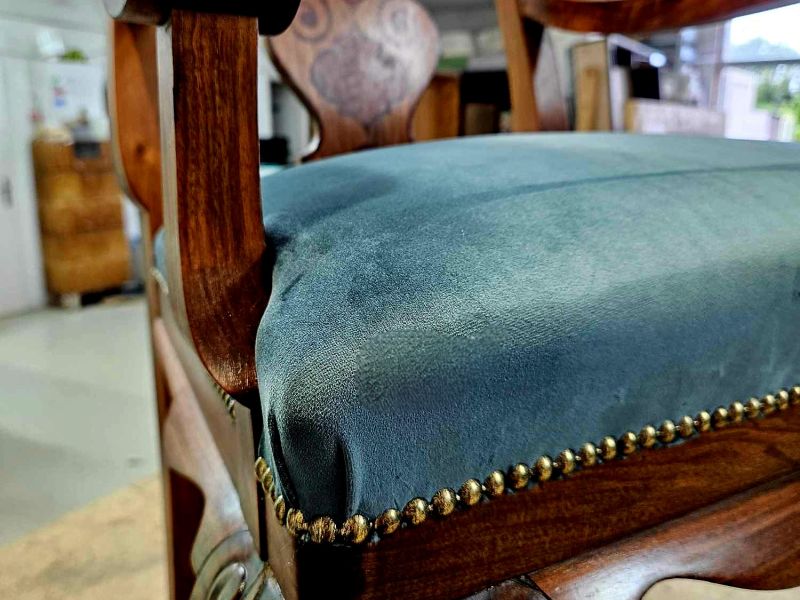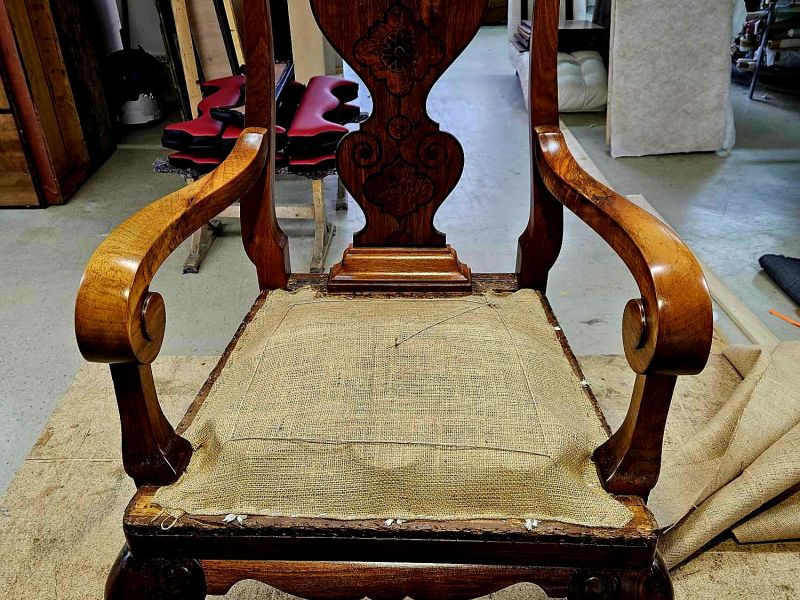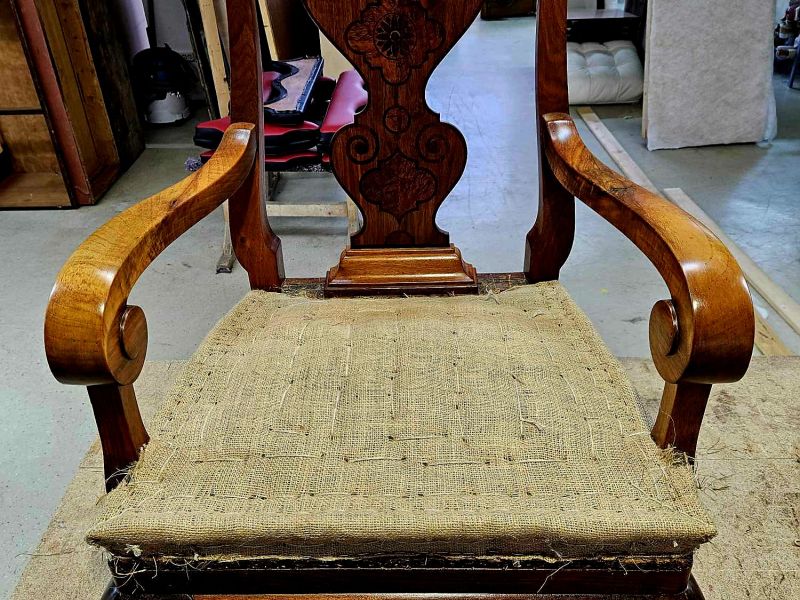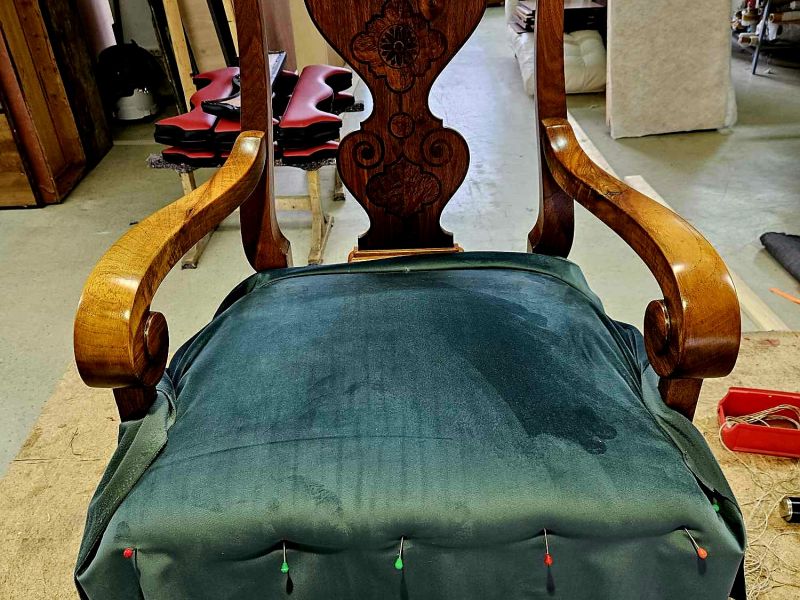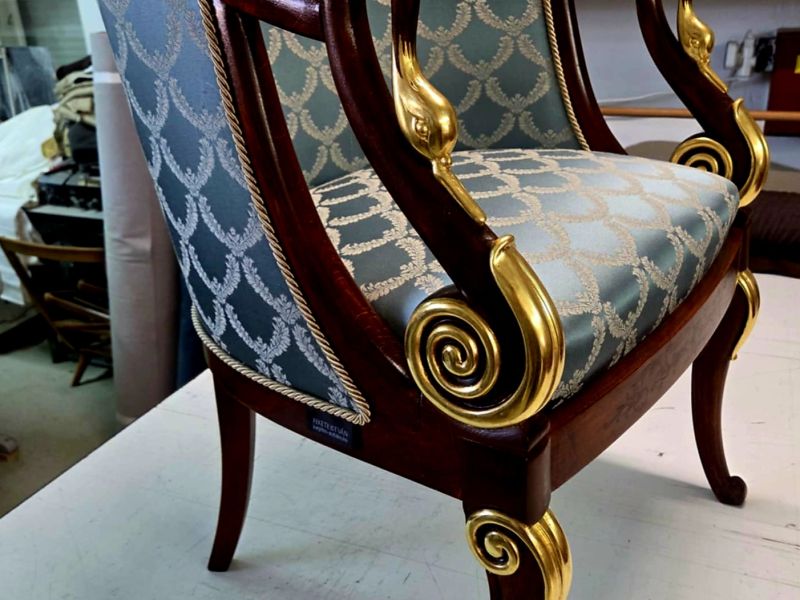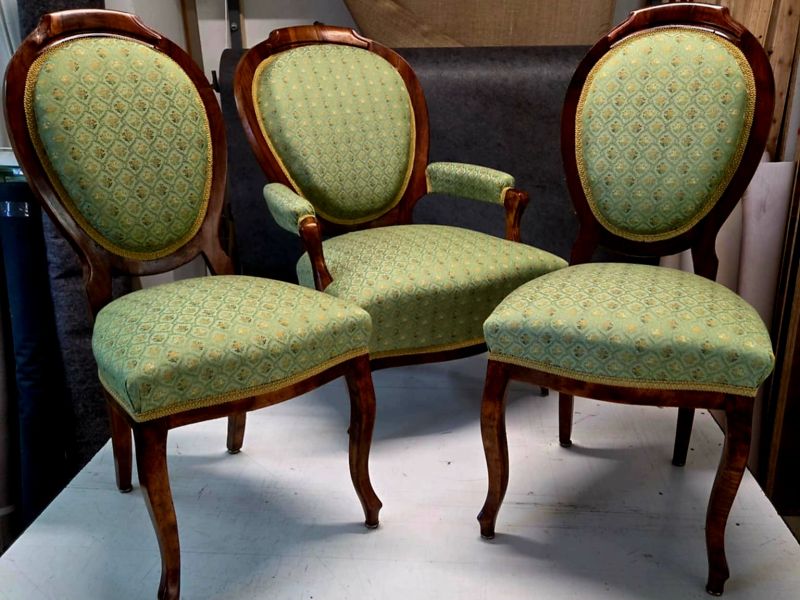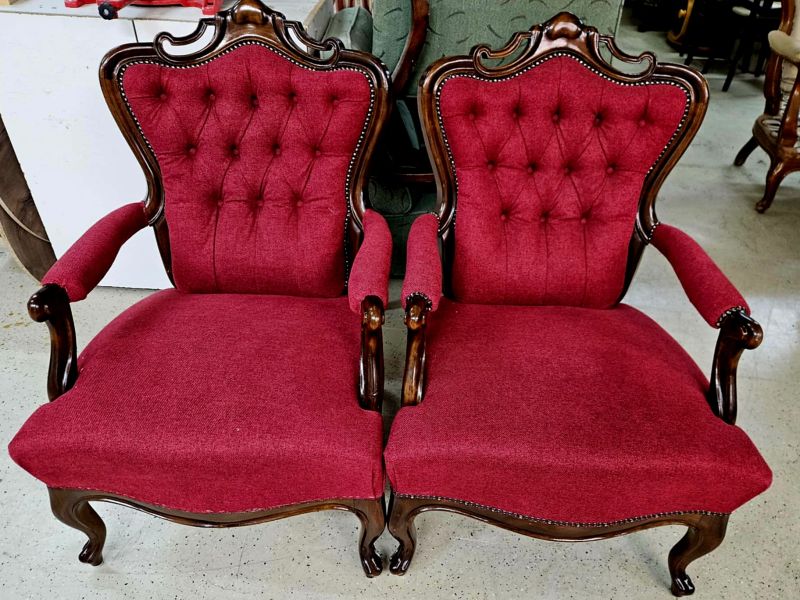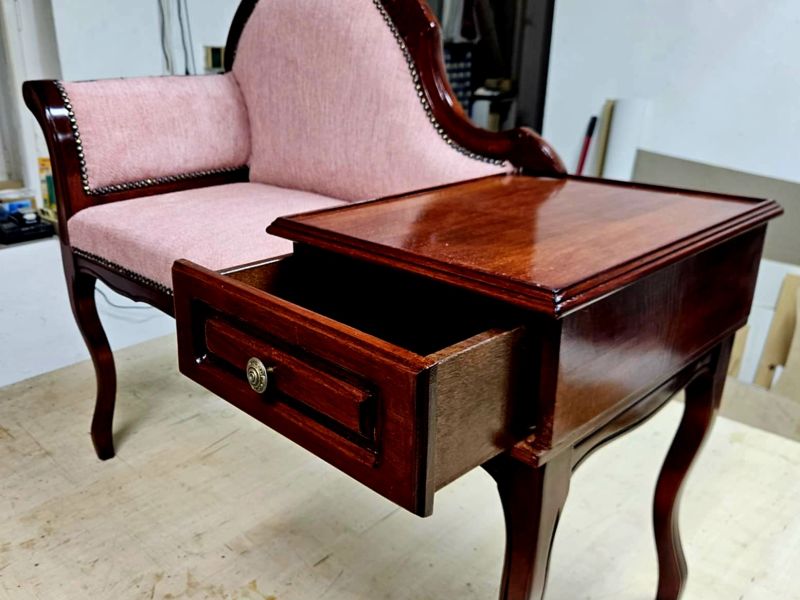Marquetry is an artistic furniture decoration technique that creates patterns, designs or even complete images on the surface of furniture by meticulously marquetrying different types and colours of wood or other materials such as bone, metal or marble. The word itself is of Italian origin and derives from the word "*intarsiare*" (to insert), referring to the basic process of inserting other, smaller pieces of material into slots cut into a base surface.
Although the art of marquetry is most typical of the Renaissance and Baroque periods, the first marquetry furniture was made by masters in medieval Italy. The first great artistic examples were seen in the cities of late 15th century Italy, particularly Florence and Venice, where master carpenters and craftsmen used wood marquetry almost as an art form. One of the most famous pioneers of the art was Andrea del Verrocchio, who made the first inlaid furniture, although he was primarily a sculptor and his influence helped to shape the technique of marquetry.
The popularity and spread of marquetry really took off in the 16th and 17th centuries, during the so-called "Furniture Renaissance", and it quickly spread not only throughout Italy, but also throughout Europe.
Making the marquetry was a very precise and time-consuming job. The craftsmen chose different types of wood for the finest details. Walnut, mahogany, rosewood and other exotic woods were used, as each wood gave a different colour and texture, giving a much richer effect. The technique was based on the idea that the furniture pieces were first carefully carved and then the individual woods were fitted into the cavities created. The marquetry most often depicted mythological, religious, floral or geometric motifs. Italian craftsmen produced a rich variety of decorations, often depicting biblical scenes, animals, flowers and landscapes. Inlaid furniture was often intended to reflect wealth and culture, and it was not uncommon to find elaborate motifs, family crests and heraldic symbols.
The heyday of inlaid furniture dates mainly from the 16th and 17th centuries, but it gradually began to fade at the end of the Baroque and Rococo periods, when the Industrial Revolution, mass production and mechanised manufacturing increasingly eclipsed handcrafted furniture making. But inlaid furniture did not disappear completely. It was rediscovered in the 19th century, particularly during the Neoclassical period, and furniture makers and designers began to reuse the technique in furniture decoration.
In the past, marquetry represented extraordinary wealth and social status. Furniture decorated with marquetry was often found in the homes of the aristocracy, royalty and high-ranking religious figures. A piece of inlaid furniture often symbolised the power and influence of an entire family or a ruler. The decorations also reflected the style of the individual workshops and the artistic skills of the craftsmen, making this furniture not only practical, but also unique works of art. Today, the art of marquetry continues to represent luxury and high craftsmanship.
This unique piece has been refurbished using traditional upholstery techniques. We used afrik, as the stuffing material, the existing springs were dressed and re-bounded, and after the base padding, the seat was covered with the beautiful turquoise blue Belgian velvet fabric shown in the picture.



